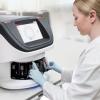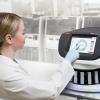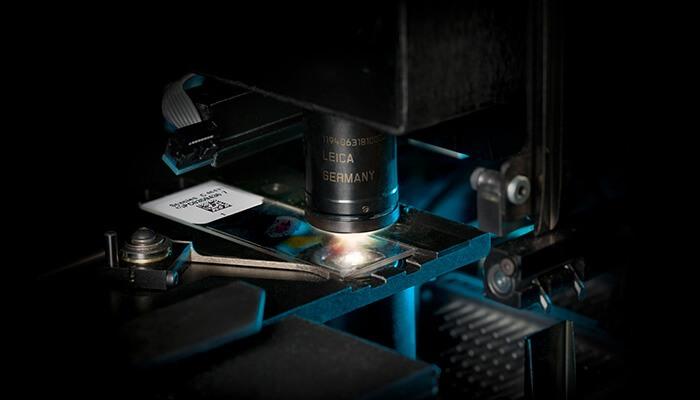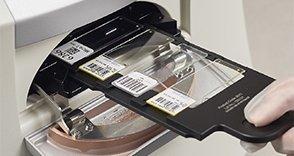Fast and Easy to Operate for Histotechnicians
The Aperio GT 450 DX is simple to operate and helps histotechnicians deliver rapid results with confidence. Complete scanning quickly and easily so you can focus on other tasks in the lab: 15 racks of 30 slides (450 slides total) can be loaded directly from HistoCore SPECTRA CV Coverslipper into the GT 450 DX. The slides are then automatically scanned at 81 slides per hour at 40x for a 15mm x 15mm area.
- No touch continuous loading during scanning
- Automated IQ checks during each scan to ensure quality
- Assign priority cases
- Every slide is calibrated with each scan
- 450-slide capacity packed into a small size fits on the lab bench
- 99.5% accurate tissue finder that allows you to adjust if needed*
- 100% first-time barcode scan success rate*
*VP-0463 validation results


























